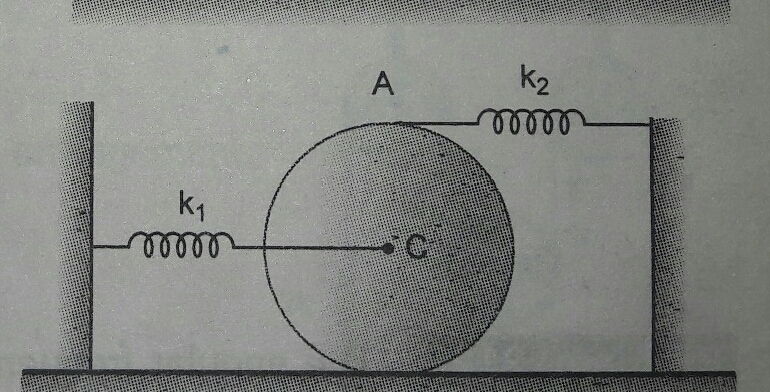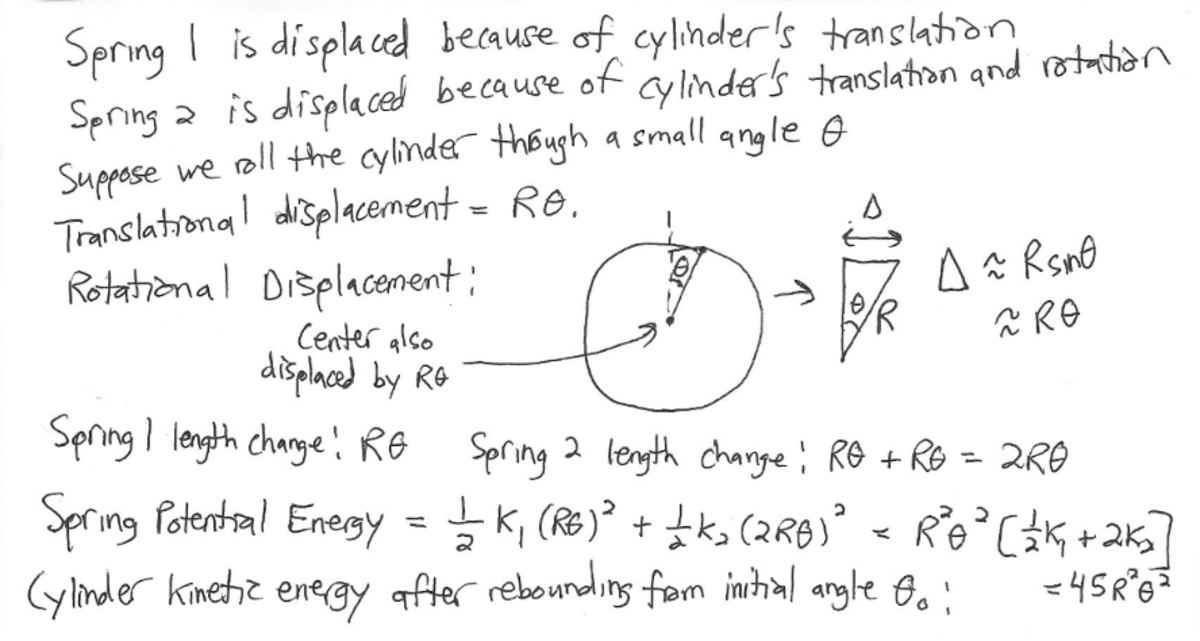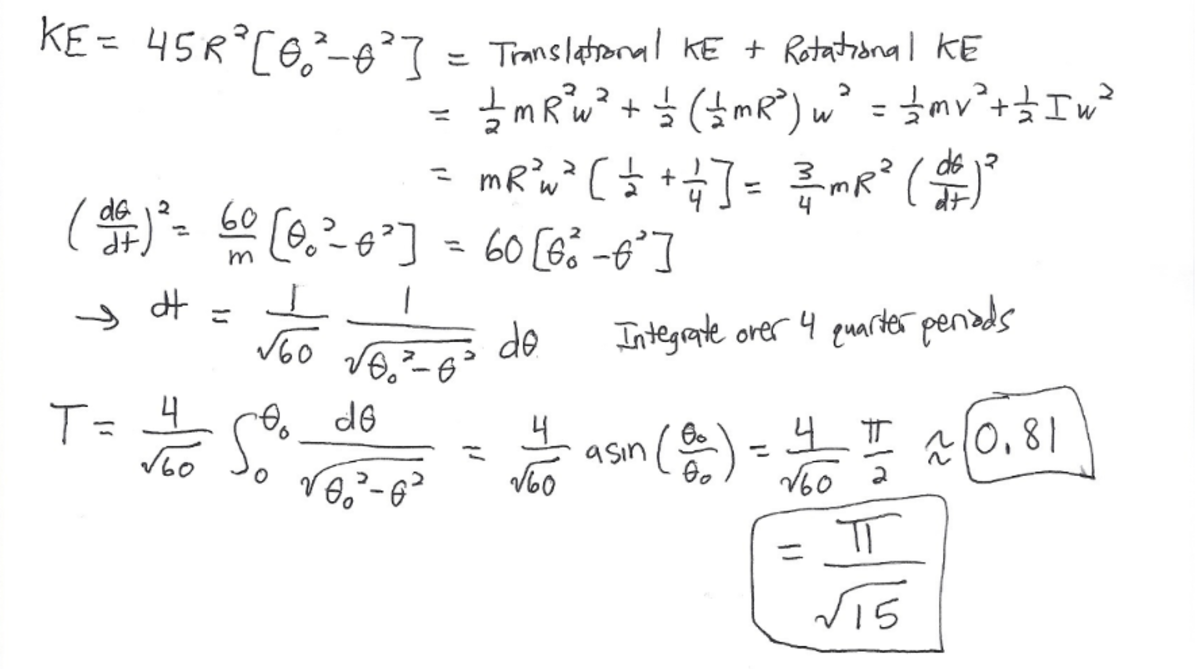A classical mechanics problem by Krishna Shankar
A solid cylinder of mass m = 1 kg is kept in equilibrium on a horizontal surface.
Two unstretched springs of forces
k
1
=
1
0
Nm
−
1
and
k
2
=
2
0
Nm
−
1
are attached to the cylinder as shown in figure.
Find the period (in seconds,
s
) of small oscillations.
Assume that the cylinder rolls without sliding.

This section requires Javascript.
You are seeing this because something didn't load right. We suggest you, (a) try
refreshing the page, (b) enabling javascript if it is disabled on your browser and,
finally, (c)
loading the
non-javascript version of this page
. We're sorry about the hassle.
2 solutions


If the cylinder rolls then isn't there friction and thus energy lost?
Log in to reply
If a cylinder rolls without slipping, there is no energy loss due to friction. So I think not. I find that to be counter-intuitive as well.
We say work is done when the point of application of force undergoes displacement not the the body as whole, thus in case of pure rolling, the bottommost point is instantaneously at rest so we say friction foes no work when rolling is without slipping , hope it makes the point clear.
instead of sin it would be arcsin() sir :)
Log in to reply
In which part?
Log in to reply
last step jusr before u get the ans.
Log in to reply
@A Former Brilliant Member – Oh, yes. "asin" is the same thing as "arcsin"
Log in to reply
@Steven Chase – sorry sir i saw that a just now :P
The two springs act in series hence, k e f f = k 1 + k 2 k 1 k 2 = 3 0 2
Time period, T = π 3 0 2 = 0 . 8 1 1 1 5 5 7 = 0 . 8 1 s